If you’ve ever wanted to grow something truly unique and exotic in your garden, the Jabuticaba tree — also known as the Brazilian Grape Tree (Plinia cauliflora) — is a perfect choice. Native to Brazil and adored across the tropics, this rare fruit tree is famous for its unusual habit of producing grapes directly on its trunk and branches. The sight of glossy, deep-purple fruits covering the bark is nothing short of magical.
In this detailed guide inspired by the video “How to Plant & Grow a Jabuticaba Tree (Brazilian Grape)”, we’ll explore everything you need to know to grow your own Jabuticaba tree — from choosing the right variety and soil to watering, pruning, and harvesting those sweet, grape-like fruits.
What Makes the Jabuticaba Tree Special?
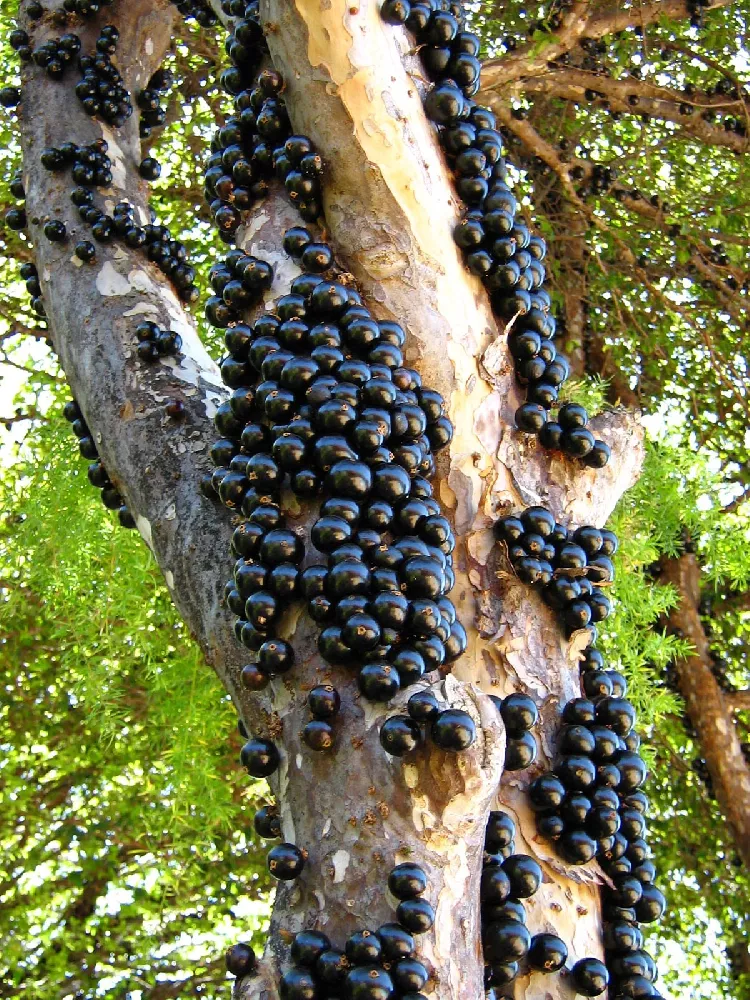
The Jabuticaba tree stands out from almost every other fruit tree in the world because of its cauliflorous fruiting habit — meaning the fruits grow directly on the trunk and main branches, not at the tips of new shoots like most trees.
When the tree is in full fruit, it looks as if someone glued shiny black grapes all over its bark. It’s both a botanical wonder and an ornamental masterpiece.
The fruits are sweet, juicy, and slightly tart — similar to grapes but with a hint of tropical richness. They can be eaten fresh, or used to make jellies, wines, juices, and liqueurs.
Apart from its beauty and taste, the Jabuticaba tree has cultural and medicinal value. In traditional Brazilian medicine, its fruits and bark are believed to have antioxidant, anti-inflammatory, and digestive benefits.
Varieties of Jabuticaba
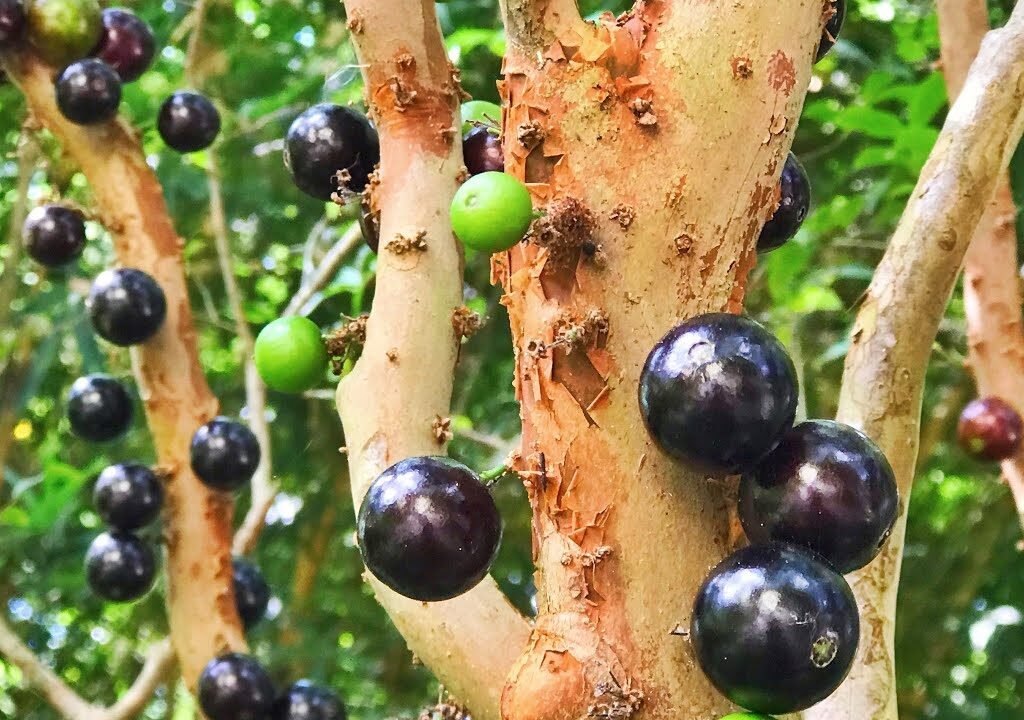
There are several types of Jabuticaba trees, each with its own fruiting habits and characteristics. The most common varieties include:
- Plinia cauliflora (Sabará) – The classic Brazilian variety with small, sweet fruit and smooth skin.
- Plinia jaboticaba (Paulista) – Produces larger fruits and grows faster.
- Plinia trunciflora (Cabinho) – Slightly more acidic, excellent for making wines and jams.
- Plinia phitrantha (White Jabuticaba) – Rare, with white or pale-green fruits.
If you’re new to Jabuticaba cultivation, start with Sabará — it’s the most common and well-adapted for home gardens and containers.
How to Plant a Jabuticaba Tree
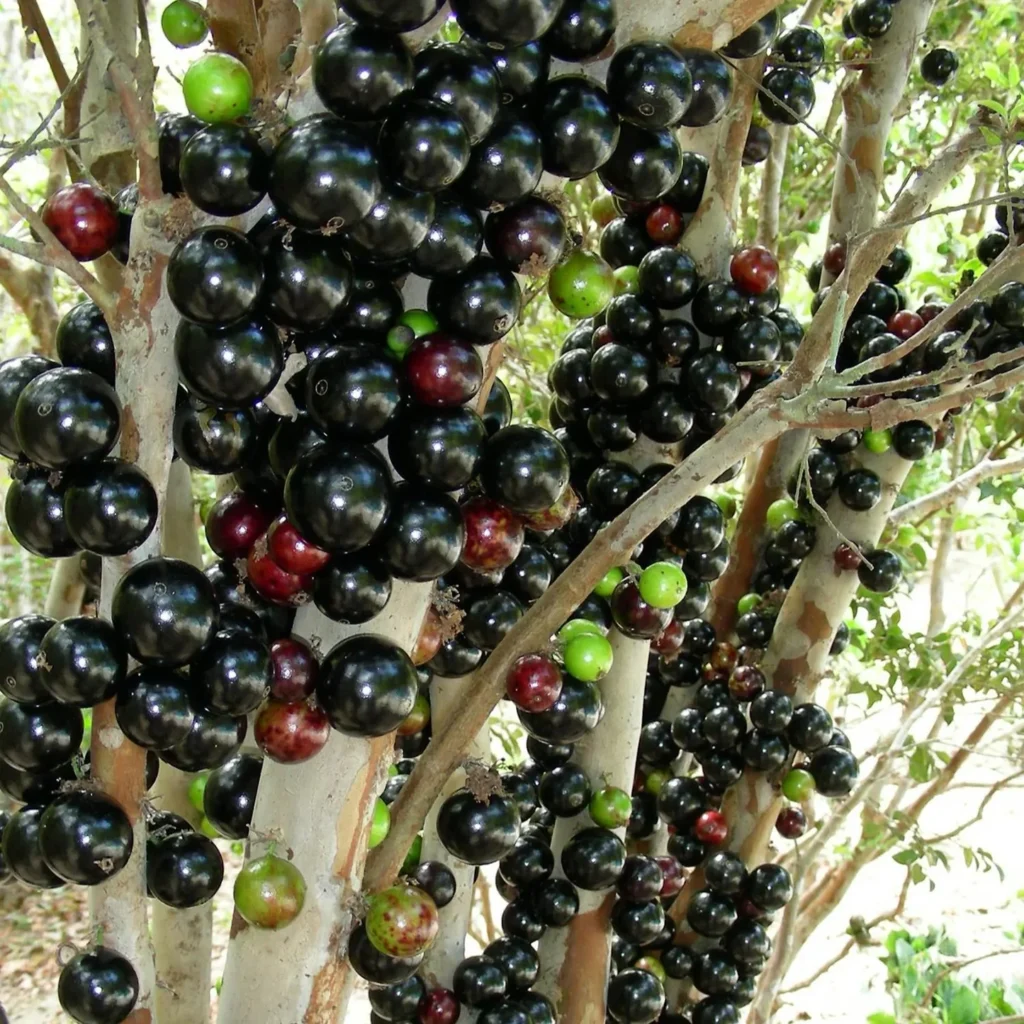
1. Choosing the Right Location
Jabuticaba trees thrive in warm, humid tropical or subtropical climates. They prefer full sun to partial shade. However, young trees can be sensitive to direct heat, so it’s best to give them filtered sunlight during their first year.
- Ideal temperature: 18°C to 30°C (65°F to 86°F)
- Protection: Shelter from strong winds and frost
If you live in a cooler region, the tree can be grown in a large pot or container and brought indoors during winter.
2. Selecting the Right Soil
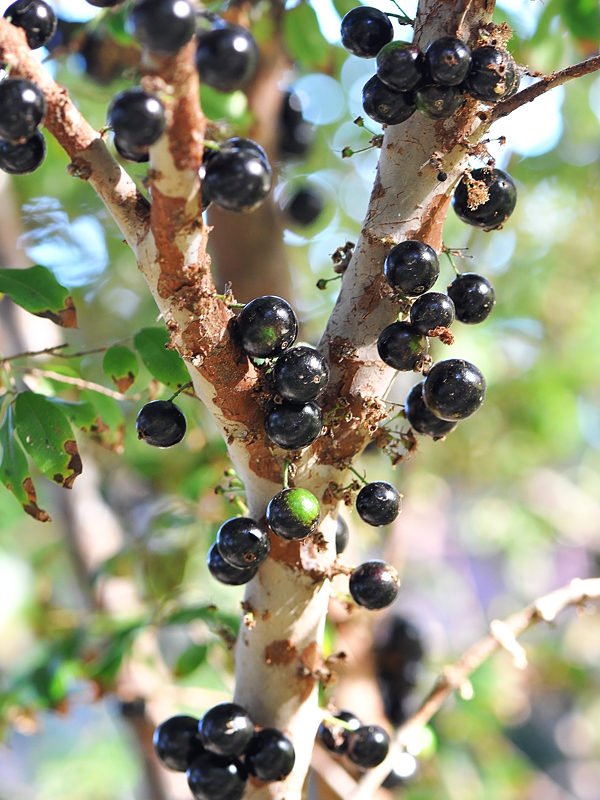
Jabuticaba trees love rich, well-draining, and slightly acidic soil.
Soil mix recommendation:
- 40% garden soil
- 30% compost or organic manure
- 20% river sand or perlite for drainage
- 10% coco peat or peat moss to maintain moisture
Keep the pH between 5.5 and 6.5. You can add a handful of coffee grounds or pine bark to maintain soil acidity.
3. Propagation Methods
You can grow Jabuticaba from seeds, air layering, or grafting.
- Seeds: Germination can take 30–60 days. The seed-grown trees take 6–10 years to bear fruit, so patience is required.
- Grafted Plants: These start fruiting in 3–4 years and maintain the parent tree’s characteristics.
- Air Layering: This method also produces faster fruiting trees (around 4–5 years).
If you want quicker results, it’s best to buy a nursery-grown grafted Jabuticaba sapling.
4. Planting Steps
- Dig or prepare a pit or pot about twice the size of the root ball.
- Add organic compost and mix it well into the soil.
- Place the sapling carefully and fill in with soil, pressing gently to remove air pockets.
- Water thoroughly right after planting.
- Apply a 2–3 inch layer of mulch (dry leaves, coco husk, or straw) around the base to conserve moisture.
For container planting, use a minimum 20–25 inch pot. The tree can grow quite tall over time, so you may need to repot it every few years.
Sunlight and Water Requirements
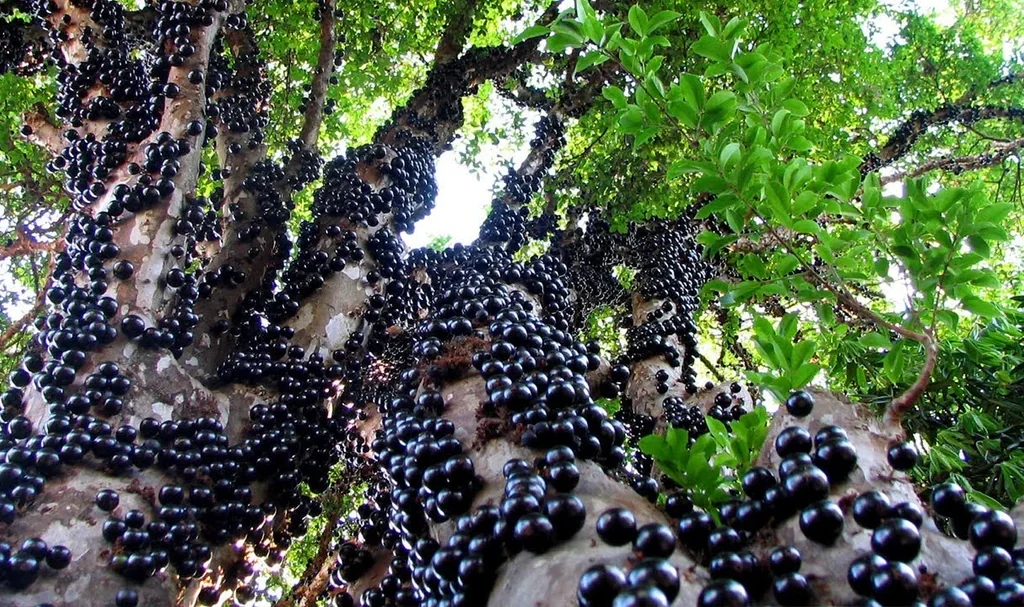
Sunlight:
Jabuticaba trees need at least 5–6 hours of direct sunlight daily. They can tolerate partial shade but produce the best fruit in bright light.
Watering:
This tree loves moisture — in fact, it’s one of the few fruit trees that can tolerate occasional waterlogging. However, it dislikes drought.
- Keep the soil consistently moist but not soggy.
- In summer, water daily or every alternate day.
- In rainy or cool seasons, reduce watering to avoid fungal problems.
- Mist the leaves occasionally to maintain humidity.
If the leaves start to curl or turn brown at the edges, it’s usually a sign of underwatering.
Fertilizing the Jabuticaba Tree
To support healthy growth and abundant fruiting, feed your Jabuticaba tree with organic fertilizers regularly.
Fertilizer schedule:
- Young plants (under 2 years): Use compost or liquid organic fertilizer once a month.
- Mature trees: Apply a balanced organic fertilizer (like NPK 10-10-10 or composted manure) every 2–3 months.
- Before flowering: Add a bit of bone meal or fish emulsion to encourage blooms and fruiting.
The Jabuticaba tree also benefits from foliar sprays — a light misting of seaweed extract or compost tea helps boost leaf health and flowering.
Flowering and Fruiting
Jabuticaba trees typically flower once or twice a year — but under ideal tropical conditions, they may flower three to four times annually.
The small white flowers bloom directly on the trunk and main branches. Within a few weeks, they transform into dark purple, grape-like fruits.
Time to fruit:
- Seed-grown: 6–10 years
- Grafted: 3–4 years
- Air-layered: 4–5 years
Once mature, a single tree can produce dozens to hundreds of fruits in a single flush.
Harvesting the Brazilian Grapes
The fruits mature quickly after flowering — usually within 20–30 days. They’re ready to pick when they turn deep purple or almost black and have a glossy skin.
- Harvest by hand: Gently twist the fruit to detach it.
- Storage: Jabuticaba fruits are best eaten fresh. They last only 3–4 days at room temperature but can be refrigerated for up to a week.
- Uses: Enjoy them raw, or turn them into jam, jelly, syrup, or wine. The flavor is refreshing — sweet, tangy, and distinctly tropical.
Pruning and Maintenance
Pruning is essential for keeping your Jabuticaba tree healthy, especially if grown in pots.
Tips:
- Remove dead or crowded branches after harvest.
- Thin out the canopy slightly to allow sunlight penetration.
- Avoid cutting the main trunk where flowers and fruits emerge.
- Keep the base weed-free and mulched.
Light pruning also helps control the tree’s height and promotes better air circulation, reducing the risk of fungal diseases.
Pests and Diseases
Jabuticaba trees are relatively hardy, but they can face issues like:
- Aphids, scales, and fruit flies: Spray neem oil once every 2 weeks as a preventive measure.
- Fungal infections (anthracnose, rust): Ensure good airflow and avoid water stagnation.
- Leaf spot: Use organic fungicide or neem-based sprays if necessary.
Keeping the tree clean, well-fed, and properly watered is the best way to prevent most problems.
Growing Jabuticaba in Containers
If you don’t have a backyard, don’t worry — Jabuticaba grows beautifully in large pots.
- Use a 25–30 inch wide container with drainage holes.
- Place it in a sunny spot where it gets morning light and afternoon shade.
- Water more frequently than in-ground trees, as containers dry out faster.
- Repot every 2–3 years to refresh the soil mix.
A container-grown Jabuticaba makes a stunning ornamental tree — compact, glossy, and full of charm.
Health Benefits of Jabuticaba Fruit
Apart from its visual appeal and taste, the Jabuticaba fruit is loaded with nutrients and antioxidants:
- Rich in Vitamin C – Boosts immunity and skin health.
- High in Anthocyanins – Powerful antioxidants that protect against cell damage.
- Contains Dietary Fiber – Aids digestion.
- Anti-inflammatory Properties – Supports overall well-being.
Including these fruits in your diet can be both a delicious and healthy choice.
Final Thoughts
Growing a Jabuticaba tree, or the Brazilian Grape Tree, is a slow but deeply satisfying journey. From its glossy leaves and unusual trunk fruits to its rich, sweet flavor, every stage of its growth feels like a reward.
With patience, care, and consistency, you can enjoy your own homegrown Jabuticaba harvest — right from your backyard or balcony.
Whether you’re a tropical gardener, a plant collector, or simply love rare fruit trees, the Jabuticaba will never disappoint. Its beauty, uniqueness, and taste make it one of the most enchanting fruit trees you can grow at home.
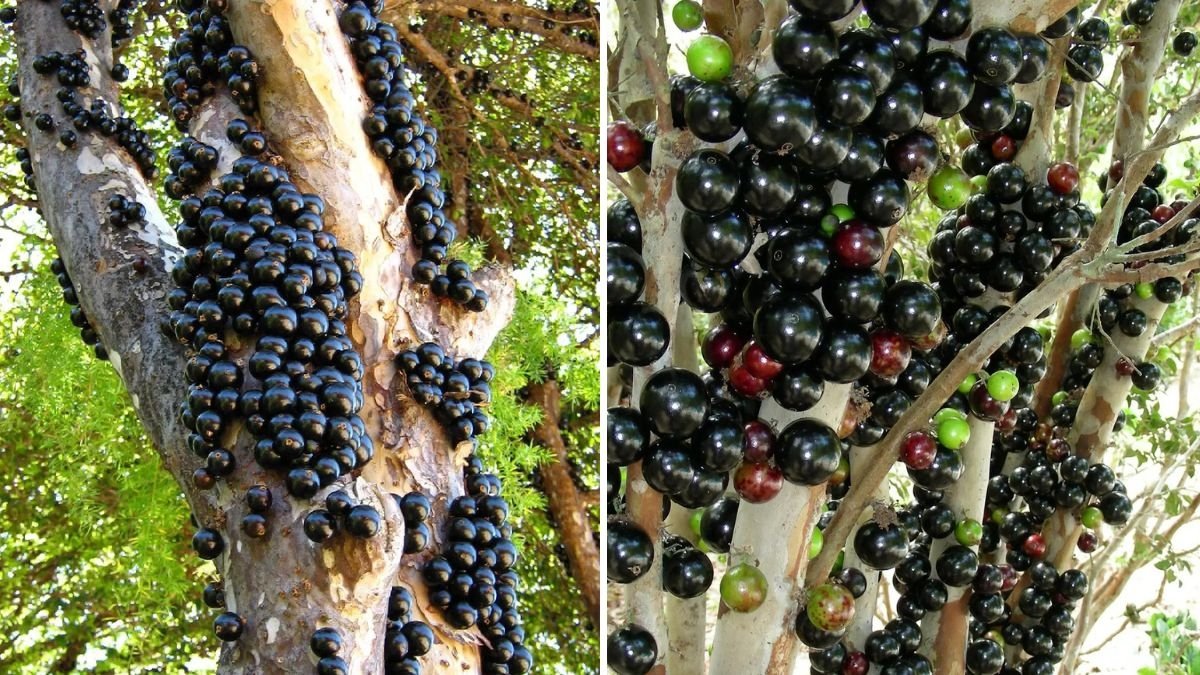
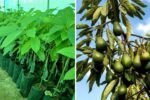
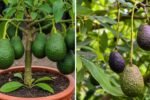
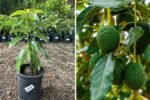
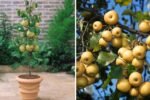
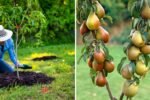
Leave A Comment